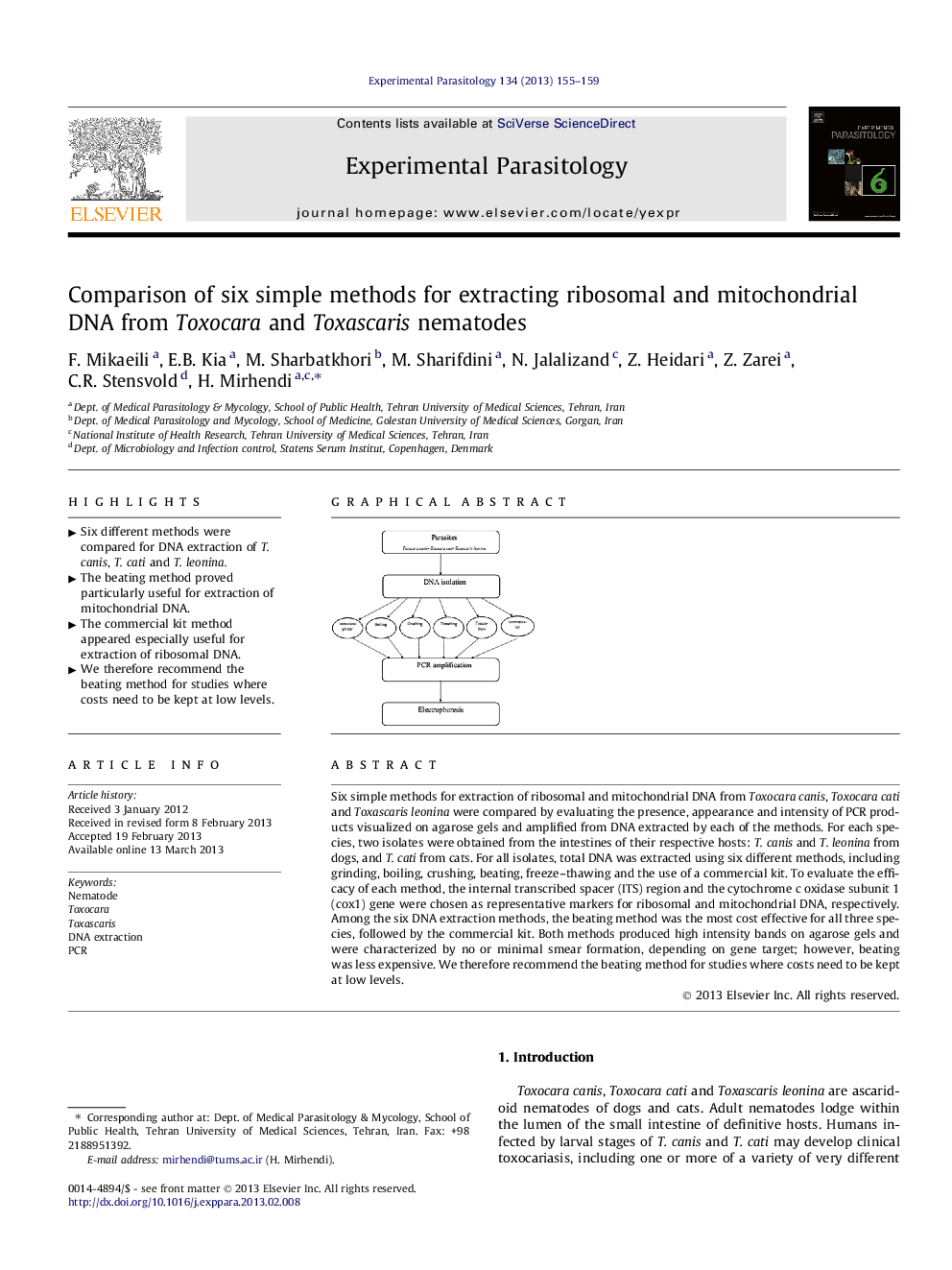| Article ID | Journal | Published Year | Pages | File Type |
|---|---|---|---|---|
| 6291282 | Experimental Parasitology | 2013 | 5 Pages |
Six simple methods for extraction of ribosomal and mitochondrial DNA from Toxocara canis, Toxocara cati and Toxascaris leonina were compared by evaluating the presence, appearance and intensity of PCR products visualized on agarose gels and amplified from DNA extracted by each of the methods. For each species, two isolates were obtained from the intestines of their respective hosts: T. canis and T. leonina from dogs, and T. cati from cats. For all isolates, total DNA was extracted using six different methods, including grinding, boiling, crushing, beating, freeze-thawing and the use of a commercial kit. To evaluate the efficacy of each method, the internal transcribed spacer (ITS) region and the cytochrome c oxidase subunit 1 (cox1) gene were chosen as representative markers for ribosomal and mitochondrial DNA, respectively. Among the six DNA extraction methods, the beating method was the most cost effective for all three species, followed by the commercial kit. Both methods produced high intensity bands on agarose gels and were characterized by no or minimal smear formation, depending on gene target; however, beating was less expensive. We therefore recommend the beating method for studies where costs need to be kept at low levels.
Graphical abstractDownload full-size imageHighlights⺠Six different methods were compared for DNA extraction of T. canis, T. cati and T. leonina. ⺠The beating method proved particularly useful for extraction of mitochondrial DNA. ⺠The commercial kit method appeared especially useful for extraction of ribosomal DNA. ⺠We therefore recommend the beating method for studies where costs need to be kept at low levels.
